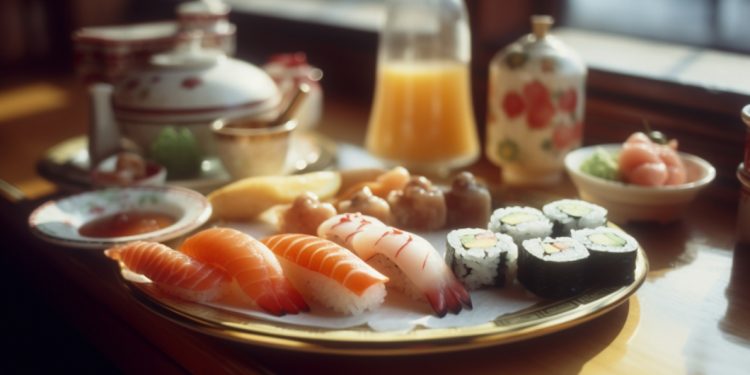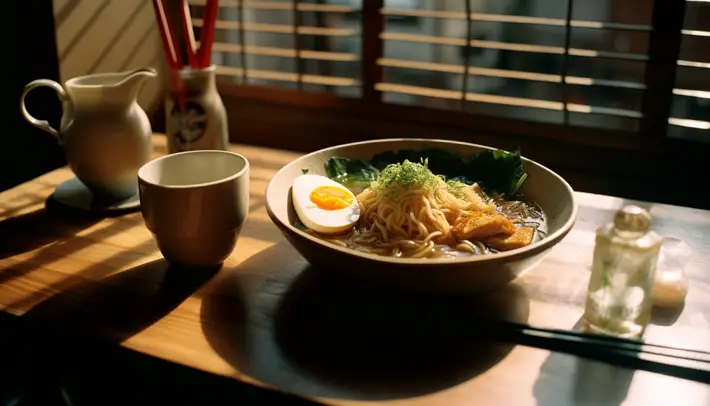From Sushi to Ramen: A Guide to Japanese Cuisine

Known for its artful presentation, delicate flavours, and cultural significance, Japanese food has captured the hearts and stomachs of foodies around the world. Whether you’re a seasoned Japanese food enthusiast or just starting to explore the cuisine, this guide will take you on a journey through the diverse and delicious flavors of Japan.
We’ll begin by exploring the history and cultural significance of Japanese cuisine, from the traditional dishes that have been enjoyed for centuries to the more modern fusion cuisine that has emerged in recent years. From there, we’ll dive into the different types of Japanese dishes, including sushi, ramen, udon, and tempura, and discover the unique ingredients and techniques that make each one so special.
But Japanese cuisine is much more than just sushi and ramen or white rice (you can get a packet here: carolinarice.com/products/white-rice/). We’ll also explore the regional variations in Japanese cooking, from the seafood-centric dishes of Hokkaido to the hearty stews of Osaka. And as we delve deeper into the cuisine, we’ll uncover the customs and etiquette that are integral to the Japanese dining experience, giving you the knowledge and confidence to enjoy a meal in a traditional Japanese setting.
So whether you’re craving a piping hot bowl of ramen on a cold winter day or looking to impress your friends with your sushi-making skills, this guide will equip you with the knowledge and inspiration to explore the rich and varied world of Japanese cuisine. Let’s get started!
Regional Variations in Japanese Cuisine
Japanese cuisine is a fascinating tapestry of regional variations, each with its own distinct flavors, ingredients, and cooking techniques. From the northern island of Hokkaido to the subtropical southern islands of Okinawa, each region has its own unique culinary traditions that reflect the local geography, climate, and history.
• In Hokkaido, the northernmost island of Japan, the cuisine is heavily influenced by the region’s harsh winters and abundant seafood. Hokkaido is known for its rich and hearty stews, such as the famous Ishikari nabe, a salmon and vegetable hot pot, and the popular Jingisukan, a grilled mutton dish served with vegetables.
• The cuisine of Tokyo, the bustling capital of Japan, is a melting pot of different regional flavors and influences. Here, you’ll find everything from traditional sushi and tempura to modern fusion cuisine. Tokyo is also famous for its street food scene, with popular snacks like takoyaki, a ball-shaped snack filled with octopus, and yakitori, skewered grilled chicken.
• In the Kansai region, which includes the cities of Osaka, Kyoto, and Kobe, the cuisine is characterized by its rich and savory flavors. Kansai is famous for dishes like okonomiyaki, a savory pancake made with cabbage, pork, and seafood, and kushikatsu, skewered and deep-fried meat, seafood, and vegetables. The region is also known for its high-quality wagyu beef, which is prized for its rich marbling and tender texture.
• In the southern islands of Kyushu and Okinawa, the cuisine is influenced by the subtropical climate and abundant seafood. Kyushu is known for its ramen and tonkotsu broth, made from simmering pork bones for hours to create a rich and creamy broth. Okinawan cuisine, on the other hand, is characterized by its use of bitter melon, tofu, and seaweed, and dishes like goya champuru, a stir-fry made with bitter melon, tofu, and pork.
Understanding the regional variations in Japanese cuisine is key to fully appreciating the depth and diversity of the cuisine. Each region has its own unique ingredients, cooking techniques, and flavors, and exploring these differences is an exciting and rewarding journey for any food lover.
Etiquette and Customs in Japanese Dining
Japanese dining culture is rich with customs and etiquette that may be unfamiliar to those new to the cuisine. From using chopsticks to slurping noodles, there are many traditions to keep in mind when enjoying Japanese food in a traditional setting. In this section, we will explore some common customs and tips for navigating Japanese dining culture.
• First and foremost, it is important to note that many Japanese restaurants have a strict code of conduct when it comes to ordering and dining. For example, it is common practice to remove one’s shoes before entering a traditional Japanese restaurant or home. Additionally, it is considered rude to speak loudly or disturb other diners, so maintaining a quiet and respectful atmosphere is crucial.
• When it comes to ordering, many Japanese restaurants offer set menus or omakase, which means “I’ll leave it up to you” in Japanese. This allows the chef to create a personalized menu based on the diner’s preferences and any dietary restrictions. It is also important to note that tipping is not customary in Japan, as exceptional service is expected as part of the dining experience.
• In terms of dining etiquette, chopsticks are the primary utensil used in Japanese cuisine. It is important to never stick chopsticks upright in a bowl of rice, as this is a common funeral rite in Japan. Instead, rest the chopsticks horizontally across the bowl or on a chopstick rest. When eating noodles, it is perfectly acceptable to slurp them loudly as it is seen as a sign of appreciation for the dish.
Japanese dining culture reflects broader cultural values such as respect for tradition, mindfulness, and attention to detail. By observing the customs and etiquette of Japanese dining, you can gain a deeper appreciation for the cuisine and the culture from which it comes.
From the fresh flavors of sushi to the comforting warmth of ramen, Japanese food has something to offer everyone.
We’ve explored the different regional variations of Japanese cuisine, and how geography and history have shaped the unique flavors and dishes of each region. We’ve also touched upon the important customs and etiquette that are integral to Japanese dining culture, which reflects broader cultural values.
By trying new dishes and experiencing Japanese cuisine firsthand, you can gain a deeper understanding and appreciation for Japanese culture. So why not step out of your culinary comfort zone and explore the delicious and fascinating world of Japanese food?










